Seaweed, Pincers, Comeback | Week 4 of my LiA in Otsuchi, Japan

In the Basement...
The week that followed the wreckage of my third workshop began not with a grand revelation but in the sleek looking basement lab at AORI, in a room circled by expensive refrigerators and with a distinct smell of seaweed. Professor Hayakawa-san had enthusiastically invited me and students of a local high school into his domain to show us how he and his team diligently categorize all kinds of sediment and plants acquired from the waters of Otsuchi.
I crouched over a handful of trays, nets, and a set of little pincers, probably looking completely puzzled. As we waited for the high school team to show up, Hayakawa-san began inquiring about my time in Japan, and especially how I was handling the Japanese language. I told him about my confusion between the words “chikatetsu” and “tetsudo” and how my fumbles sometimes made students giggle. He also heard a handful of stories from Tokyo, and listened earnestly to my pronunciation of everyday words. To my surprise, the professor was quite impressed. He asked for how many years I had been learning the language and was quite taken aback when he heard “three months” as a response. I am still not too sure if he was being polite, or was genuinely impressed by my language skills - probably something in-between, but this conversation ignited a sense of achievement - which I have been devoid of especially after the last workshop.
Eureka?
Soon we heard a knock on the door and a teacher alongside a single student made their way into the lab. That was the high school group. I was quite shocked - that Hayakawa-san took his time after work for just a single student - but he did not look bothered at all. That afternoon in the basement, watching the student’s slow, delighted concentration, as well as the diligence and an undeterred attitude from Hayakawa-san, something softened inside me. I watched how attentive and dedicated the professor was for a single student. The disaster of week three - the failed printers, the neutered software - had stripped away my ego. I had been clinging to a particular image of success: full classrooms, sleek deliverables, tidy outputs. The lab made a different truth visible. You do not always need many hands to make something meaningful; All professors and teachers in Kamaishi or Otsuchi or anywhere else I had observed seemingly did not care about the headcount of students - what mattered more was that each student, be it just one or two in some cases, received as much care and attention as possible. It was inspiring. They did not care about a strict focus on numbers and outcomes and deliverables, as I was used to seeing in Toronto. They invested in singular individuals, in the youth which was the future of depopulating Iwate prefecture. My superficial fear and anguish over the size of my own classroom soon started to dissipate.
From the Ashes
The climb back from my own defeat took shape slowly, in small conversations. I spoke at length with You Jia Lee, my Laidlaw coordinator, and separately with my coach. Both of them asked questions that felt sort of indulgent: How are the students? Who showed up? What do they already know? They made me realize that what was the most important was the impact on students - not numbers or strictly enforced deliverables. Their focus was not scale but depth. They reminded me gently, insistently that my presence here was not an exercise in perfect program design, but a cultural exchange and a leadership mission. I began to read more about classroom culture in Japan, about the quiet forms of participation that can be mistaken for disengagement. I learned, painfully and gratefully, to stop translating silence as failure.
The most important and surprising lesson was practical. I had spent mental energy mourning the small classrooms as if size equaled value. But in this depopulating coastal town, the norm is different: people invest in the one, the two, the handful. In a place hollowed by the 2011 tsunami, the currency is attention.
So I pivoted. The plan was no longer to produce a tidy map as proof of success. I redrew arrows on my program sheet and erased entire bullet points. The new objective was quieter and, I found, more difficult: to cultivate spatial thinking, curiosity, and confidence in students. More importantly, I was not there to fuel and satisfy my own ego. My only goal became to inspire students.
Technical preparation shifted from checking boxes in ArcGIS to designing interactions that would spark questions. I dug deeper into the software myself — not to run flawless demonstrations, but to make small, repeatable tasks that invited discussion: “What do you notice here?” “Why might this shoreline look like this?” “How can we spot depopulation marks and see inference?” Maps became prompts, not products.
The workshops began to feel less like lectures and more like conversations. Demonstrations were short and tactile: I’d show a tool, then step back and let students take turns, narrating their choices in Japanese with Yuki-san’s graceful translation. Sometimes the software still failed us; sometimes a layer would not load, even after my futile attempts to tame the monster of technology. But those glitches became entry points for shared problem solving rather than proof of incompetence.
If week three taught me humility, the basement and the weeks after taught me patience. Success here will not be measured by a pristine final map in my folder, but by the number of times a student leans forward to say, “Look,” and the number of times the room leans in with them.
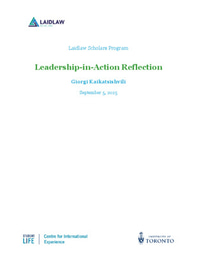
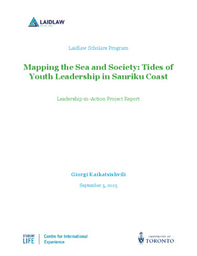
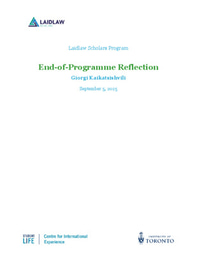
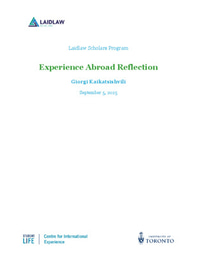
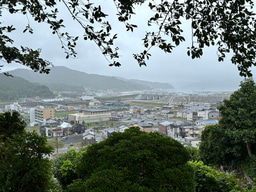
Please sign in
If you are a registered user on Laidlaw Scholars Network, please sign in